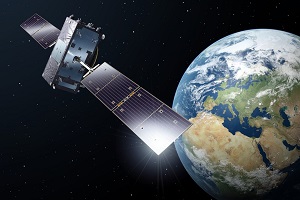Compared to other industries in APAC, which are at the forefront of innovation, digital transformation in the IoT space in Asia Pacific (APAC) has experienced slow progress. But in a post-pandemic landscape, the forecasted reality for the next decade is quite different. Here, Hamish White, CEO of eSIM service provider Mobilise, explains the technology required to make APAC an IoT innovator.
Recent investment into IoT across APAC has grown in an unprecedented and unmatched way. According to a report from Telenor and Omdia, over 38.9 billion IoT devices will be in circulation in APAC by 2030, compared to the 14.5 billion that exist today. This huge increase in uptake is down to a combined effort of developed IoT regions like South Korea, Japan, Australia and China and the emergence of new IoT players like India, Pakistan, Indonesia and Thailand.
The APAC IoT context
Recently, there’s been a rapid explosion of new and existing use cases for digitalisation and IoT across various sectors. But what is IoT specifically used for? IoT makes any inanimate object smart by installing sensors that collect data. This data can then be analysed to derive actionable insights by connecting it to a network enabled by the cellular IoT.
These sensors can be installed on virtually anything. But there are some core applications where IoT is a particularly valuable resource within APAC. As a region with some of the fastest growing cities, APAC recognises its need for smart technology to ensure that these urban areas grow sustainably, securely and smoothly. Some of the common negative effects of mass urbanisation — traffic congestion, pollution and waste mismanagement — can all be tackled using smart IoT enabled solutions.
Another common IoT use case relates to energy efficiency. This could be the efficiency of a building, manufacturing process or the whole supply chain. APAC is home to some of the largest exporting nations in the world, like China and India, who’s own sustainability consequently has a direct impact on the sustainability of the entire supply chain. By collecting and analysing data from various data sources across a building, various machines on the shop floor, and even on shipments or vehicles involved in the transportation of goods, IoT makes it possible to identify areas of energy inefficiency that can be corrected to improve general energy consumption.
Most, if not all, governments have some form of sustainable development plan in place. A Google Cloud survey of C-suite executives revealed that technology and sustainability are the two areas of key investment at the moment. And IoT sits at the centre of these two domains, as a key enabler of improving energy efficiency. So it’s clear that IoT will continue to grow and become a key area of development in APAC moving forward. But what’s the telecoms technology required to make it happen?
The connectivity link
It’s important to consider what technologies are required to make IoT deployments successful. To be able to connect, collect and analyse data and gain value from IoT, you need to be able to connect each sensor to the network. Connecting IoT devices over a mobile network is referred to as the cellular IoT. It uses existing mobile networks to remove the need for a separate, dedicated infrastructure, which in turn makes IoT deployment more accessible to emerging markets.
A range of networks can be used, but there are two networks specifically designed for IoT connections — LTE-M and narrowband Internet of Things (NB-IoT). LTE-M offers a lower price point and voice and SMS support while NB-IoT offers low power and low data usage making it more suitable for long range and reliability requirements. But to connect to the network, there needs to be some element of SIM provisioning.
A subscriber identity module, or SIM, stores information about a subscriber’s account, whether that’s a consumer or IoT device. IoT plastic SIM cards allow the device to communicate with the network in the same way that a consumer SIM card would, but this approach doesn’t come without its challenges. In an increasingly digitalised world, a digital SIM is much more convenient, futureproofed and offers a host of additional benefits — eSIMs and iSIMs.
The eSIM era
eSIMs, or embedded SIMs are the current digital alternative to physical SIM cards, suitable for both consumer and IoT applications. eSIMs eliminate any of the problems associated with using removable, physical SIM cards. The device’s network is determined after the production, shipment and deployment of the IoT device. It’s easy to switch connectivity providers as and when required, which offers ultimate flexibility to tailor an IoT device depending on its location and application.
Any smart device must typically operate for a life span of ten to 15 years. As eSIMs provision network credentials over the air, they’re connected and maintained remotely, meaning there’s no need to physically handle a device to make changes to its connectivity capabilities. This supports a longer lifespan by making it more durable and less prone to environmental damage.
With IoT, it’s necessary to deploy sensors in publicly accessible places. So naturally, there are concerns around data security. With physical SIM cards, it’s possible to just remove it, but eSIMs are physically soldered onto the device, eliminating the risk of physical theft by making identification harder and removal impossible.
While the GSMA first introduced an M2M, IoT eSIM standard back in 2012, it’s only recently that we started to see significant advancements in adoption and awareness. After years of development, only now are we seeing serious uptake across several applications, meaning eSIM is ultimately a superior choice for IoT deployments that need an entirely digital, more streamlined setup. But while the eSIM era’s only just begun, there’s a newer technology already on the horizon: iSIM.
iSIM
Integrated SIMs, or iSIMs are the latest development in SIM technology that will transform IoT applications. While an eSIM requires dedicated chip in order to initiate its set up, iSIM has a dedicated space on the System on Chip (SoC) where it’s protected by a Tamper Resistant Element (TRE). Sitting at around two per cent of the size of an eSIM, iSIMs measure less than one millimetre squared in surface area, which is crucial in the context of IoT.
Not all IoT devices are large, so smaller components are always welcomed for applications where space is limited. Their size means iSIMs create more opportunities for battery-operated IoT devices and smaller form factors, which opens up a host of new use cases. Think electricity or gas metres, medical equipment and even telematics become easier to produce compactly when components are smaller.
iSIMs sit directly on the SoC and don’t require any other processing elements to function. But they are still in development, and current use cases are limited. Their limited usage at present means that they don’t draw much power from the SoC. But as the technology develops, this favourable location means they’ll be able to draw power more quickly in the future, which enables a quicker cellular response. For IoT applications where real-time data analysis is required, this trait will become a major benefit too.
A considered choice
While iSIM is undoubtedly the next generation of SIM technology, the completion of the proof-of-concept only took place in 2021. Considering the timeframe that it has taken for eSIM to gain traction, it’s likely that there’s still a few years to go before IoT devices use iSIM technology.
For now, those looking to invest and develop IoT deployments should focus on the potential that eSIM brings. The technology is tried, tested and trustworthy, and users can be confident that it will deliver connectivity, without the logistics of organising, setting up and managing physical SIM deployments on a potentially international scale.
It’s an exciting time as the APAC IoT landscape will grow exponentially over the next decade. For those in the region, ensuring there’s the right technology in place to deliver real-time connectivity on the widespread scale in essential. While eSIM is undoubtedly the centrepiece, a coexistence of physical SIMs, eSIMs and iSIMS will likely make up the reality, each with different benefits for a different, growing range of applications.
Article by Hamish White, CEO of Mobilise
Comment on this article below or via Twitter: @IoTNow_










